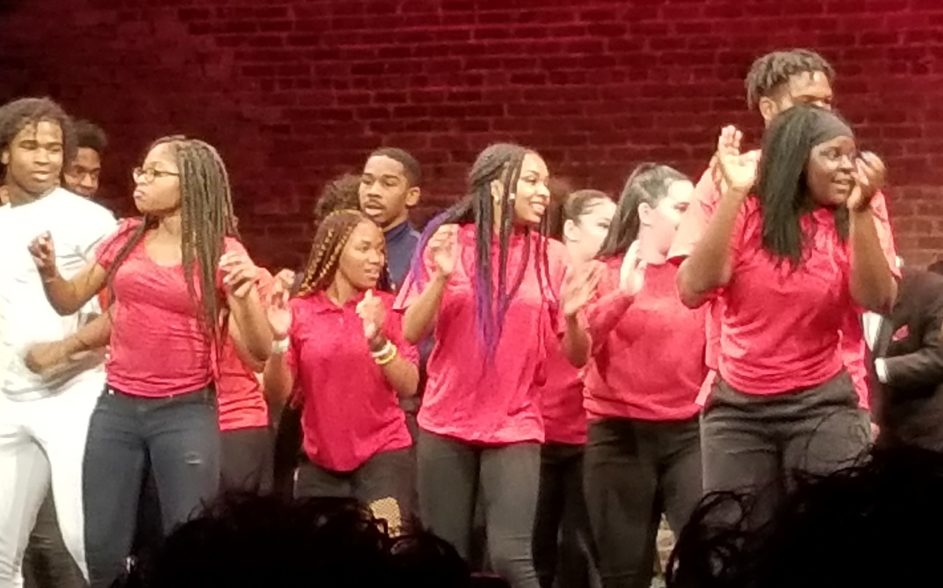The Bijou Theatre was the perfect venue for Monday night’s program celebrating Black History Month. And the price was right, too.
The Rev. Reneé Kesler, president of the Beck Cultural Exchange Center, said co-sponsorship by the Knox County Public Library and the Bijou Theatre meant admission was “totally free so we all could participate.”
Robert J. Booker said he was “mesmerized by the talent” displayed by performers from Austin-East Magnet High School (directed by Malaika Guthrie), the Knoxville Opera Gospel Choir (directed by Jeanie Melton) and Morristown West High School.

Robert J. Booker, founding executive director of the Beck Cultural Exchange Center, and Beck’s current president/CEO Reneé Kesler.
Booker signed autographs for his newly released book, “The Heat of a Red Summer: Race Mixing, Race Rioting in 1919 Knoxville.” Copies are available for $15 at the Beck Center.
Booker joked that he “wore out two credit cards” getting the book ready for publication in 2001, just as the publisher went broke. So, he had researched and written an important work, but there were no copies. Kesler vowed to get it printed. And she did.
“The Heat of a Red Summer” tells the story of Maurice Mays, a biracial man charged with killing Bertie Lindsey, 27, a white woman shot by an intruder in her home. Knoxville in 1919 was considered a progressive city, yet the arrest of Mays brought out a lynch mob. The sheriff got Mays safely out of town to Chattanooga, but race riots here resulted in several deaths. Mays was tried twice, both times by all-white juries, and convicted. He was executed in Nashville on March 15, 1922, at age 35.
Monday’s narrator, Dr. Maxine Thompson Davis, said there’s no doubt an innocent woman was killed here in 1919. But was an innocent man, Maurice Mays, also killed? Davis was a solid counterpoint to the student performers. The retired UT administrator commanded attention, yet managed some comedic digs, such as calling Mays the mayor’s son and then “correcting” herself – “Hummfp. Did I say that?”
Kesler noted the importance of 1919. The NAACP was formed in Knoxville in early August with James G. Beck, the center’s namesake, as the first secretary; the race riots occurred at the end of that month, and just a few weeks later, women were able to vote for the first time.
Interestingly, the Lamar House, now the Bijou Theatre, was built in 1801 with its first high-profile event attended by soon-to-be-president Andrew Jackson in March 1819 – 200 years ago.
The library contributed video of Knoxville in 1919. Dogs and a random pig walked on a muddy Gay Street. Buildings looked pretty much like those today, minus the glass towers built in the 1970s by the Butcher brothers.
Kudos to all performers: the soloists, the chorus, the dancers, the drummers, the lighting and sound professionals and those special guys from Morristown West, Chris Cox and Dalton Miksa, who performed “The Cure.”
The missing credit? A director. Who put this extraordinary evening together? I’m guessing Reneé Kesler – the woman who says we must not forget history or leave it alone. “We must wrestle with it until all are set free and until this world is a better place to live.”

